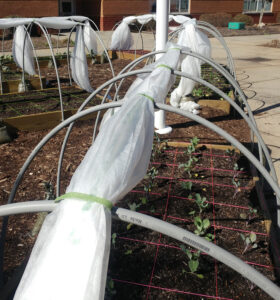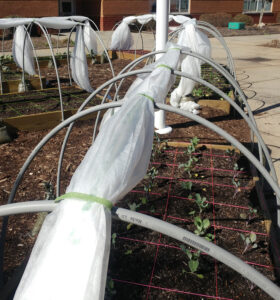5 Tidying Tips

While a few crops, like kale and Brussels sprouts, may still be producing, most of the fall garden will be put to bed for winter. Below are 5 tips to help prep for winter downtime. For those plants you want to keep going, simply add a protective layer of mulch and keep a frost blanket handy for cold spells below 25 degrees.

- While preparing your garden area for winter and the next season, keep in mind that not everything needs to go in the compost bin. Many plants may have set seed that could be harvested. Are there any seeds you want to keep to sow next year (an age-old practice called seed saving) or you might send some home with students? Some seed heads may provide bird food through the winter. Consider if there are any art projects that could incorporate dried flowers. Once you’ve determined any potential uses for garden “debris,” it’s time to haul off any remaining spent plant material to the compost bin.
- General cleanup tasks might include: disconnecting and winding up hoses, picking up any plastic flats or inserts that were left around the garden, taking down signage that needs repainting or replacing over the winter, and removing gridding string from square-foot beds if you want new classes to re-grid next season.
- This is a great time to add compost to your beds. If you’re not able to top-off your beds now, you can still involve students in calculating the amount of soil needed before planting again in late February. Remember, this is a volume calculation that involves the length, width, and depth of the area needing soil. Multiplying feet x feet x feet will result in cubic feet which is the common measure for bags of soil from a garden center. If buying in bulk from a landscape supply business, you will need to convert the total number of cubic feet to cubic yards (divide cubic feet by 27 to get cubic yards).
- While out doing clean up jot down notes of things that went well that you’d like to repeat and what things you’d like to avoid in the future. It’s so much easier to reflect on these things at the end of the season while you’re looking at the space. It’s also a good time to note what items need to be replaced, such as hoses or watering cans.
- It’s a great time to ready the tool shed for the upcoming season. Allow a few students to put their minds together to “reorganize” the tool shed and take pride in making this happen. It tends to have a bigger impact on student ownership of the garden when they are involved in the decision making for having the tool shed look tidy and function well.
- Categories: